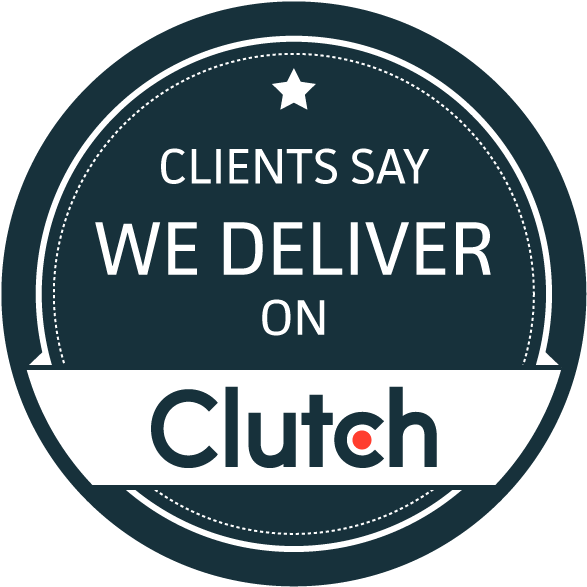Education Analytics Core Integrations
- An efficient Student Information System (SIS) enables precise enrollment predictions, evaluates curriculum effectiveness, and streamlines course scheduling optimization
- An LMS, or Learning Management System, enables the prediction of student performance and prompt identification of struggling learners. It offers tailored suggestions to enhance academic progression
- CRM solutions enable organizations to scrutinize interactions with prospects, students, parents, alumni, faculty, and donors. These tools offer valuable insights for tailoring engagement, marketing, and fundraising initiatives, enhancing their effectiveness
- A streamlined HR management system aids in evaluating educator performance, analyzing staff turnover trends, optimizing schedules and workload distribution, and boosting efficacy in ongoing education and team collaborations
- Financial management tools encompass various software applications such as accounting software, office systems for project development, grant and research administration systems. These tools provide valuable data for astute financial decision-making, including budget setting, fundraising strategies, and endowment administration
Top Requested Features of Educational Analytics Software
Education Analytics leverages past and current data to present a holistic perspective on factors such as student enrollment, academic results, attendance rates, teacher credentials, efficiency in financial management, utilization of facilities, and various other aspects related to educational institutions.
Enrollment analytics
Awaiting collapsible script rebuild.
- Segmenting prospective students through demographic analysis, GPA/SAT scores, educational history, academic focus areas, and extracurricular involvement
- Monitors key enrollment indicators such as admission rate, enrollment ratio, diversity measures, and program-specific enrollments
- Streamlined admissions via AI-driven evaluation, uncovering trends in application data for efficient prospect assessment
- Examining past enrollment statistics to isolate factors influencing enrollment and locating potential obstacles
- Analytics for marketing, encompassing lead scoring and return on investment (ROI) assessments in campaigns
- Peer Comparison: Enrollment Benchmarks Analysis
- Forecasts enrollment, graduation, and dropout rates via predictive analytics
Student body analytics
Awaiting collapsible script rebuild.
- Monitoring academic progress, class participation, and interaction levels among students
- Segment data based on factors like student, subject, assignment type, curriculum, and necessary parameters for effective analysis
- Examining survey data from students and parents, correlating it with academic results, satisfaction levels, retention rates, and more reveals valuable insights for enhancing educational experiences
- Monitoring student involvement in extracurricular activities and group initiatives to pinpoint regions requiring focused assistance and intervention, thereby fostering social harmony and student welfare
- Predicts learner success utilizing personalized data and historical outcomes of comparable students
- AI-driven student learning: Personalized recommendations of educational activities & resources
- Instant tracking of student attendance and engagement, allowing prompt actions for struggling learners
- Monitor and alert when student scores drop below set performance benchmarks
Curriculum analytics
Awaiting collapsible script rebuild.
- Course scheduling: Intelligent automation & optimization
- Examining learner outcomes and engagement levels with various educational resources such as textbooks, videos, simulations, and course structures for optimization purposes
- Streamlining learning course efficiency by pinpointing disparities, repetitions, and potential waste
- Analyzing educational material consumption, including module and course pathway completion rates
- Analyzing course enrollments and student interests for insightful curriculum development
Educator analytics
Awaiting collapsible script rebuild.
- Evaluating educator effectiveness utilizing student engagement, academic performance indicators, and input from students and parents
- Analyzing educator credentials: qualifications, certifications, and ongoing training
- Examining and evaluating the influence of educator training initiatives, such as workshop attendance and further education courses, on classroom instructional effectiveness
- AI-driven recommendations for tailored educator training programs and career advancement courses optimized per professional
- Turnover Analytics for Human Resources
- Workload Optimization: Streamlining Team Efficiency
- Promotes effective collaborative efforts among educators, fostering knowledge exchange and streamlined teamwork
- Evaluating the efficacy of diversity & inclusion initiatives within human resource strategies
Financial analytics
Awaiting collapsible script rebuild.
- Financial Key Performance Indicators (KPIs) such as revenue breakdown from tuition and non-tuition sources, cost of instruction categorized by student and department, plus grant award income by researcher are crucial for effective monitoring and segmentation
- Evaluating fundraising campaign efficiency, focusing on key metrics such as donor retention and average donations per supporter
- Strategy formulated via demand, competitor price, and modeled pricing assessments
- Analysis reveals endowment worth from donor & gift expenditure data.
- Payroll analysis & comparative data insights
- Budgeting via financial forecasting
Facilities analytics
Awaiting collapsible script rebuild.
- Optimizing usage of classrooms, labs, and facilities through rate monitoring for efficient resource allocation
- AI Optimizes Energy Consumption, Offering Insightful Recommendations
- Surveillance camera data analyzed instantly
Education Analytics leverages past and current data to present a holistic perspective on factors such as student enrollment, academic results, attendance rates, teacher credentials, efficiency in financial management, utilization of facilities, and various other aspects related to educational institutions.
- 2-6 months to create a Minimum Viable Product (MVP)
- Estimated costs for solutions range from $30,000 to $600,000, depending on scope. Use our online calculator for customized cost estimates
- Integrates: SIS, ERP, CRM systems
- 300% yearly ROI, 4-month payback duration
Guide to Creating Tailored Analytics System for Educational Organizations
Education Analytics Software Development: A Methodical Approach. The development of analytics software for educational institutions is a systematic process aimed at delivering tailored analytics capabilities that empower data-driven decision-making. Leveraging several-decades-long of expertise in custom analytics solution implementation, Sfinitor's consultants outline the essential phases and present our top practices for creating robust analytics tools within the education sector.
1. Analyzing business needs and defining software requirements
Translating Business Aims: Software Requirements Clarification Business Analysts engage stakeholders such as CIOs/CTOs, school administrators, and educators, to gather requirements for software development. They systematically document these needs, prioritizing them for effective execution.
In intricate systems, Sfinitor advocates initiating with a Proof of Concept (PoC) to assess the solution's viability. Alternatively, consider a Minimum Viable Product (MVP) for swift user input, allowing for subsequent software modifications based on feedback.
2. Technical design
In the design phase, a software architect chooses integrations, essential architecture components, and technologies necessary for executing analytics procedures. To expedite project completion and minimize expenses, various analytics elements can be constructed using existing platforms such as Azure Synapse Analytics, Amazon Redshift, or Google BigQuery.
During this phase, Sfinitor assesses various cloud services and technologies, evaluating factors such as performance, integration capabilities, pricing models, and scalability. The analysis aims to select technologies that offer an optimal balance between cost and benefits, and facilitate seamless upgrades in the future. Concurrently, data security mechanisms and management practices are established at this juncture.
3. UI/UX design
Tailoring analytics dashboards according to user roles fosters seamless user adoption and facilitates efficient data exploration. For instance, educators might find value in a thorough depiction of student performance statistics, while administrators could require an expansive overview of the institution's performance, with quick access to faculty-specific details among other segments.
In adherence to UX/UI design principles, we routinely assess the existing software systems of our clients, such as CRM and SIS platforms. Our aim is to integrate common tools, graphics, and color schemes for familiarity, while enhancing ease of navigation within the proposed solution.
4. Quality Assured Deployment Processes
Shifting Quality Assurance (QA) testing tasks to the left of the development process and concurrently executing tests alongside coding is a commonly suggested approach. This method helps eliminate preventable QA issues early, fosters seamless collaboration between development and QA teams, and guarantees zero severe defects in the production phase.
Sfinitor's methodology strikes a balance between leveraging pre-built third-party components and microservices for code reuse, and crafting custom solutions. This strategy, combined with efficient Continuous Integration/Continuous Deployment (CI/CD) designs, robust DevOps practices, and practical Quality Assurance (QA) automation, allows us to potentially decrease development costs by up to 78%.
Our Full Technology Stack for Your Projects
At Sfinitor, we don’t just build software — we architect scalable, secure, and high-performance solutions using a powerful stack of modern technologies. From backend frameworks to frontend libraries, cloud platforms, and automation tools, our team leverages a full-spectrum tech arsenal to bring your ideas to life. 🔧 Explore the tools that power our innovation
Web
Back end






Front end








Mobile






Desktop





Clouds





Success Stories
Explore how we've helped clients build impactful mobile apps tailored to their industry needs and business goals. Use the filters to browse our case studies by industry or region to find the most relevant projects.
Immigration Lawyer Mobile App with Secure Client Portal & Community Network
An immigration law firm working with individuals and families across North America and Europe. The team provides legal assistance for visa applications, asylum cases, work permits, and family reunification. In addition to 1:1 legal consultations, the firm has long supported immigrant communities through education and peer initiatives.
Read moreCore-Integrated Digital Banking System for Omnichannel Back-Office Workflows
A mid-sized retail bank undergoing digital transformation across its operations. The bank was seeking to modernize its internal workflows and unify systems used by various departments — including client onboarding, compliance, internal communications, and data processing — while maintaining full integration with its existing core banking system.
Read moreFull-Stack E-Commerce Platform for Product Sales, Vendor Portals & Order Fulfillment
A regional retail business expanding into online sales with a hybrid model: operating its own branded storefront and hosting multiple vendors through a shared marketplace. The company sells directly to end consumers but also facilitates sales and logistics for third-party sellers across various product categories.
Read moreWhy Businesses Choose Sfinitor

Google Partner since 2010.

A quality-first approach based on a mature ISO 9001 quality management system.

Agile approach to achieve efficient results in projects with vague scope.

Recognized for reliability, trustworthiness, and excellence in delivering value.

Expertise in engineering, cloud migration, AWS environment.

Expertise in delivering strategic solutions across the Microsoft Cloud.
Cost & ROI Analysis in Education: A Breakdown
Education analytics development costs can vary between $30,000 and $600,000 contingent upon the scale of the proposed solution.
Factors significantly shaping cost estimations encompass an institution's organizational intricacy – such as departmental count, geographical dispersion, diverse stakeholder groups, and curriculum variety – along with the type of systems to be combined (custom, out-of-the-box, or legacy software), user role numbers, requirement for machine learning/artificial intelligence functionalities, and other considerations.
Incorporating analytics within educational institutions typically yields a yearly Return on Investment (ROI) of approximately 300%. This substantial return is primarily attributed to optimized student experiences and engagement, heightened productivity among academic personnel, and streamlined efficiency in fundraising endeavors.
Stay Ahead with Smart Tech Innovation
Leverage emerging technologies to streamline operations, boost performance, and future-proof your business. Partner with us to turn innovation into a competitive edge.
- Big data
- Artiticial intelligence
- Computer vision
- Internet of things
- Blockchain
- Mixed reality
Turn Big Data into Actionable Insight
Harness the power of scalable, secure solutions to collect, store, process, and analyze data with confidence. Make smarter decisions—faster.
